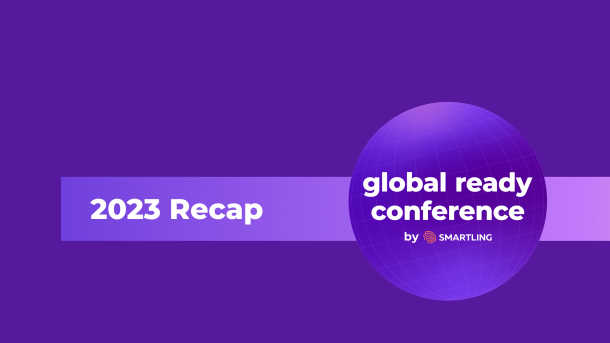In a world where localization is a key player in reaching the global audience, how can we optimize workflows, utilize the potential of AI, and translate or generate content more effectively?
Tune into this webinar to understand:
- Different types of source content
- How AI can help improve content for translation or generation workflows
In Smartling’s first webinar of 2024, distinguished panelists, Alex Yanishevsky: Director of AI and Machine Translation, Smartling and Sebah Ghannam: Associate Globalization Technology Specialist, Procore discussed the challenges and potential of creating and modifying source content.
A primary highlight of the discussion was the role that both humans and AI will continue to play in the localization industry. A poll conducted during the webinar highlighted a shared pain point: the inefficient processes to adhere to style guides and glossaries. The discussion around this has become a hot topic, associating directly with source content concerns.
The Challenge Alex explained the categories source content fell into. Some required pre-editing, while others hinted towards the "death of source" in lieu of content generated through AI and other advanced technologies. Sebah voiced her concerns about the time and the editing that goes into translations. She suggested involving large language models (LLMs) in the process, and pre-cleaning source content before feeding it to the machine translation units (MTUs).
Taking the Leap Alex acknowledged these issues and proposed solutions, among which emphasizing the testing of different parameters individually stood out. Despite the occasional latency issues faced by OpenAI platforms, Alex emphasized the remarkable potential that large language models bear. He mentioned the technology's ability to measure changes in the source and target and a feature dubbed as "edit nature," devised to assess substantial changes objectively.
AI and Humans - A Harmonious Ensemble Sebah shared her viewpoint of seeing LLMs as facilitators, not replacements. Her idea revolves around integrating them into the existing processes, like creating customizable rules for easing the translation process, assisting linguists in filtering training material, and more. LLMs offer a spectrum of uses - from aligning with style guidelines to adjusting the formality of language and injecting glossaries which are extremely beneficial to linguists and project managers alike in the localization industry.
Personalization - A Double-Edged Sword Alex further speculated on cultivating a mini LLM for each user, adjusting to their information and preferences. He noted this type of adaptive approach can yield a highly customized and localized experience for users. However, he voiced caution about the costs associated with task-specific fine-tuning of LLMs and questioned the return on investment for individual personalization.
A New Frontier It's noteworthy that one can observe an intersection of localization and marketing strategies with personalization options through AI. Even diverse brands, from entertainment giants like Disney can manipulate LLMs' capabilities for crafting content fitting their unique personas. So, the future may not necessarily hold the "death of source," but rather a reimagining of it influenced by AI.
As we progress further into this new frontier, the one thing that becomes apparent is the significant role AI is likely to play. In the end, Smartling's goal, as Alex puts it, is to "empower humans by using AI to make their work more efficient and focus on tasks that require cognitive abilities and analysis."
In essence, the blend of AI and humans will reveal an exciting evolution in the realm of content localization, transforming challenges into opportunities. One thing is for sure: the journey towards the perfect blend is well underway, and it's an exciting one!






